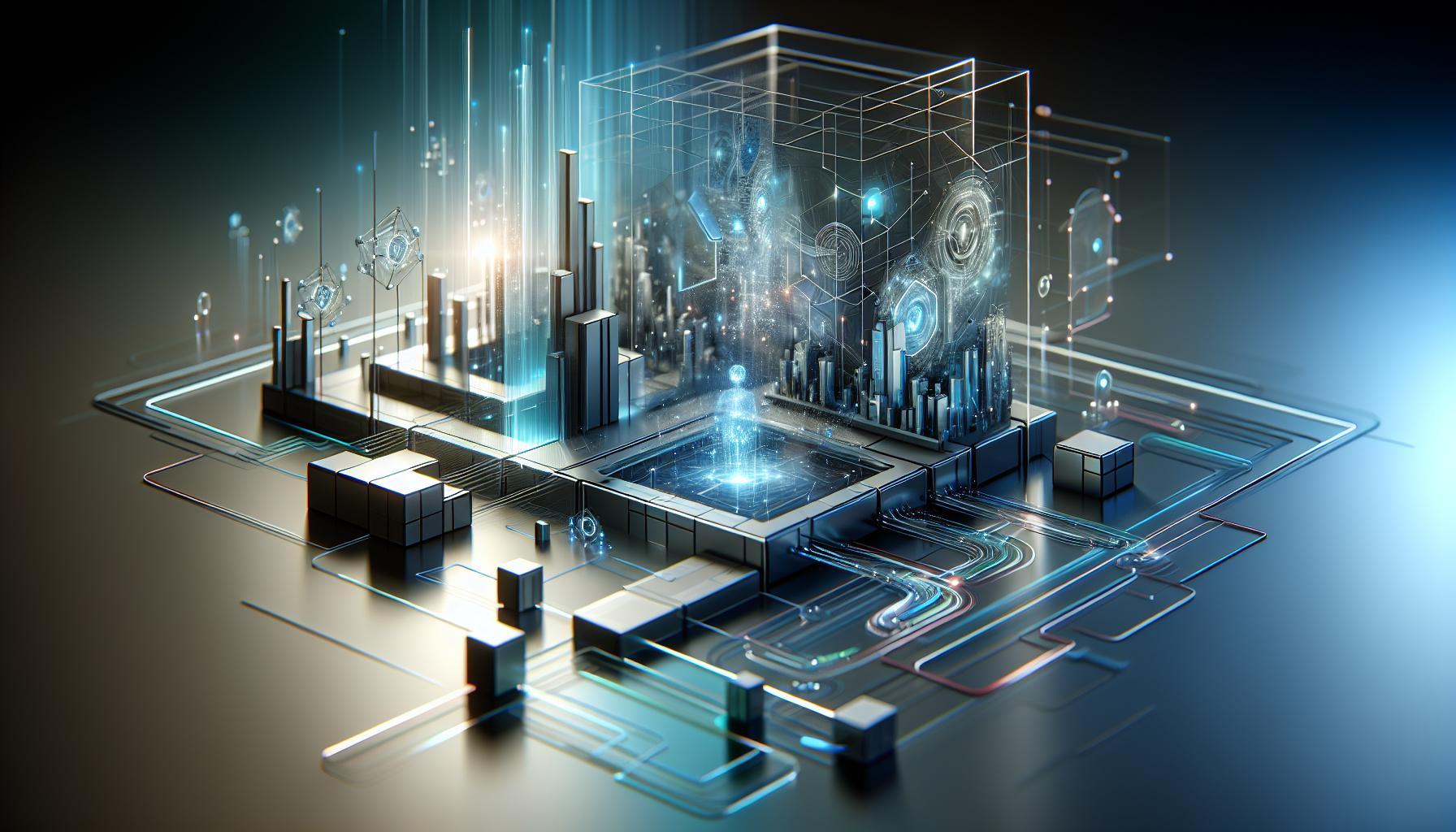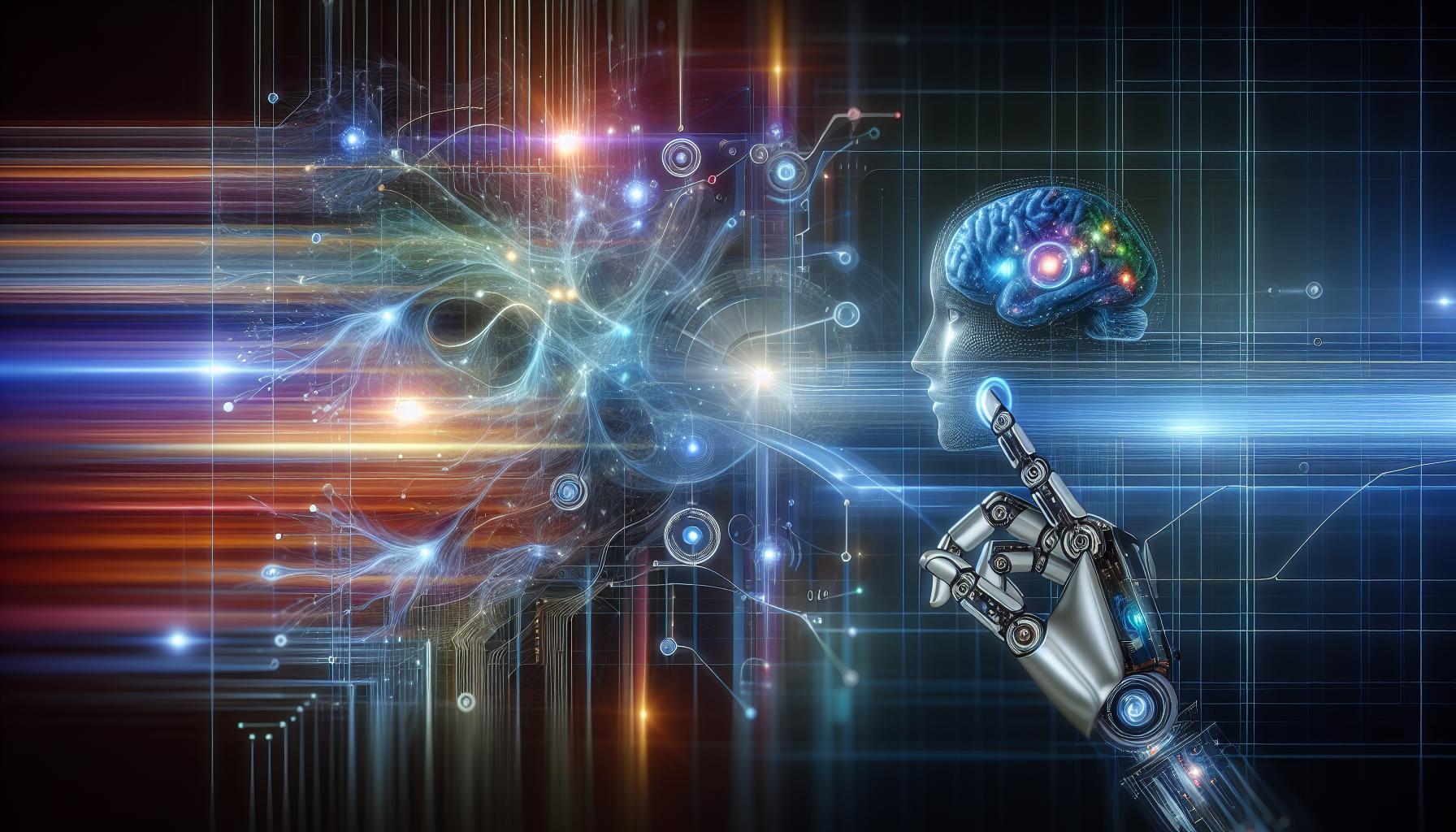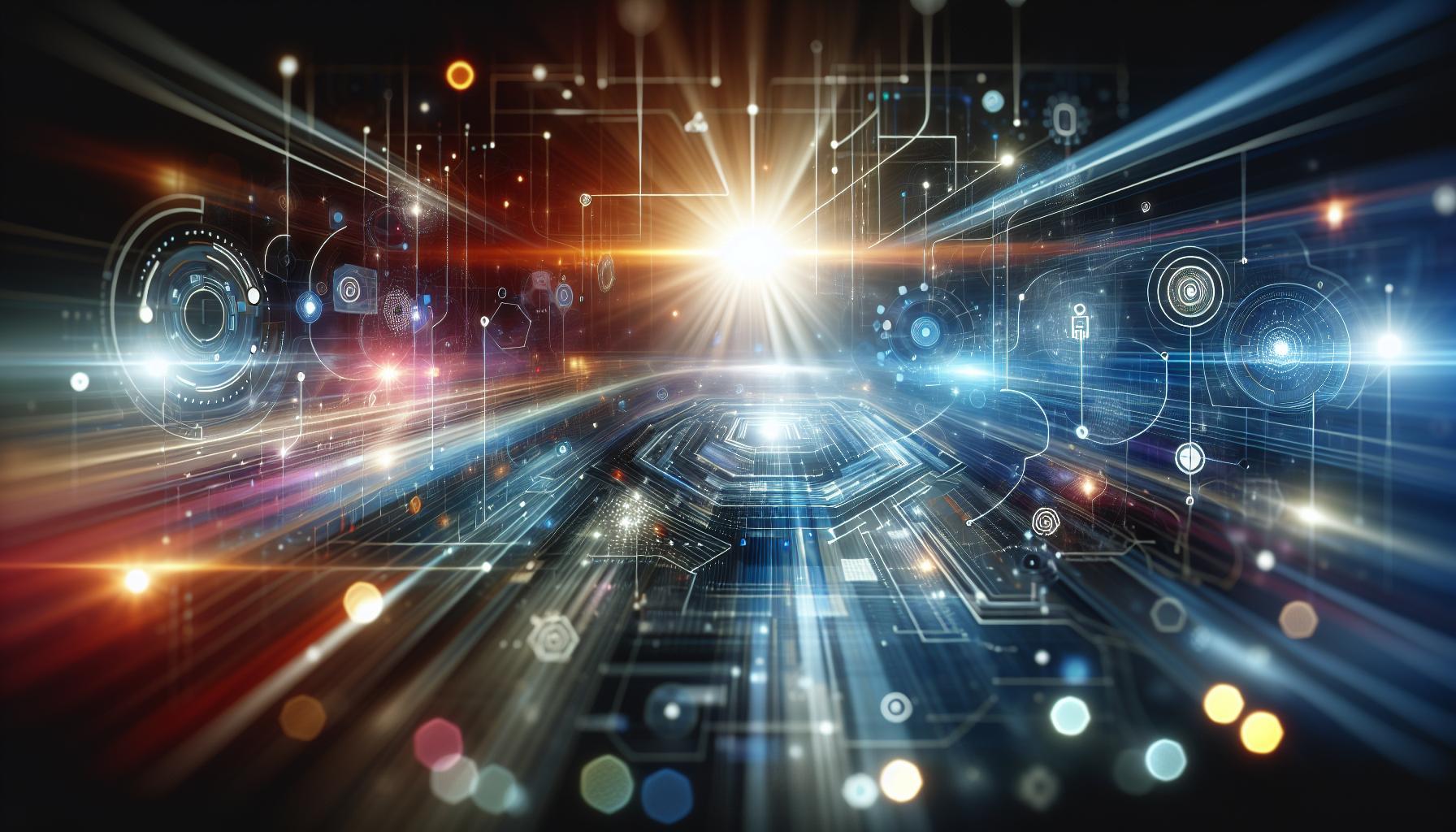In the evolving landscape of AI image generation, creators often struggle with adapting powerful models to specific artistic styles without incurring high costs or extensive retraining. Low-Rank Adaptation (LoRA) offers an innovative solution, enabling users to fine-tune large models efficiently. Understanding this technique is essential for harnessing the full potential of AI in creative workflows.
Understanding the Basics of LoRA in AI Image Generation
In the evolving realm of AI image generation, understanding how techniques like LoRA (Low-Rank Adaptation) can enhance creative processes is essential for artists and developers alike. LoRA enables the use of existing large models like Stable Diffusion in a more versatile and efficient way, allowing creators to fine-tune these models for specific styles or subjects without extensive retraining. This results in stunning visual outputs that still maintain the quality of the original model while being tailored to unique artistic needs.
The Mechanism Behind LoRA
LoRA works by adding low-rank matrices to a pre-trained model, which allows it to learn from new datasets or styles with minimal computational overhead. Unlike traditional training methods that require the entire model to be retrained, LoRA modifies only a small fraction of the parameters, which greatly speeds up the adaptation process. This method is particularly beneficial for creators who want to integrate specific design elements into their work but lack the resources or time to retrain large models comprehensively.
- Targeted Adaptation: Focuses only on the parameters most relevant to the new task, enhancing speed and efficiency.
- Memory Efficient: Reduces the amount of memory required for fine-tuning, making it accessible for users with limited computational power.
- Flexibility: Supports a wide range of applications, from enhancing existing models to generating unique outputs based on user specifications.
Practical Applications of LoRA
Understanding LoRA’s capabilities prompts a myriad of creative applications. For instance, artists can develop specialized LoRA models that incorporate personal styles or mimic famous artistic techniques. This ability to produce tailored imagery finds usage across diverse domains, from game design to marketing graphics. Creators can efficiently produce high-quality images that resonate with their intended aesthetic while saving time and resources.
Consider the integration of LoRA in the workflow of an artist looking to evoke a vintage style in AI-generated portraits. By employing a small, fine-tuned LoRA model on top of a pre-existing framework like Stable Diffusion, the artist can generate images that reflect desired properties—such as color saturation and texture—without compromising on quality or originality.
By adopting LoRA into AI image generation practices, creators unlock a gateway to innovation and unique expressions, underscoring the importance of this technology in the modern digital art landscape.
How LoRA Enhances Image Generation Techniques
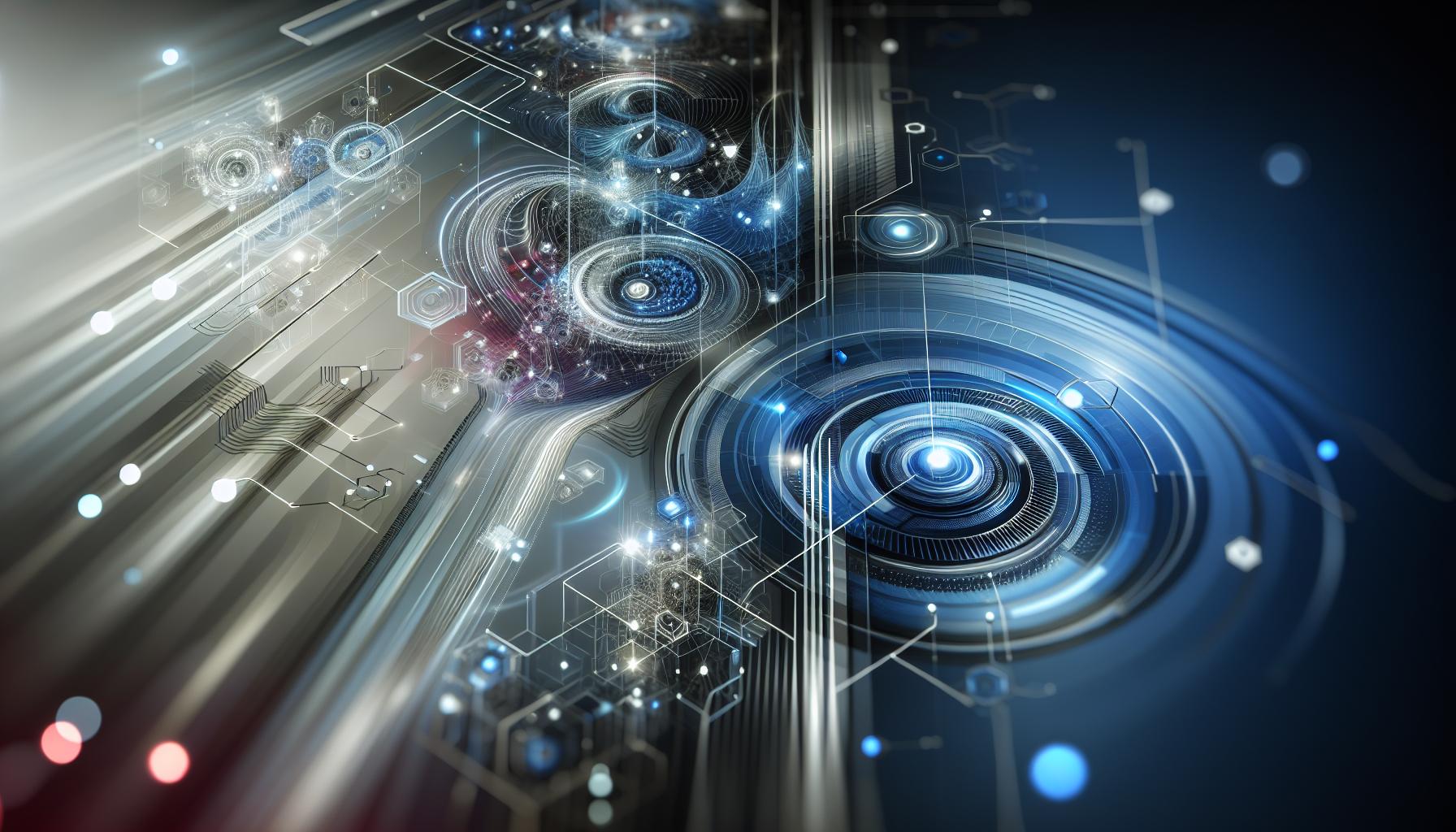
The advent of Low-Rank Adaptation (LoRA) in AI image generation has revolutionized how creators approach the task of generating images that are not only vivid but also stylistically rich. Utilizing LoRA facilitates the model’s ability to generate images that reflect unique artistic styles or specific character traits, which enhances the relevance and aesthetic appeal of the output. By allowing fine-tuning of existing models with less computational overhead, LoRA empowers artists and designers to explore imaginative realms without needing extensive datasets or training time. Here’s a closer look at .
Efficiency in Style Adaptation
One of the most significant advantages of employing LoRA is its capacity to adapt pre-trained models to mimic distinctive styles without the need for a complete retraining. For instance, a model trained on general data can quickly learn to replicate the artistic style of popular shows or individual artists, as seen with models inspired by the Netflix show Arcane. By applying specific prompts, users can generate stunning AI artwork that captures the essence of vibrant color palettes and character designs inherent in the original works. This means that creators can simply input styles or characteristics they desire, and LoRA will adapt the model accordingly, resulting in richer and more personalized imagery.
Multi-LoRA Composition
In addition to adapting existing styles, LoRA also allows for multi-dimensional image creation through techniques such as LoRA Switch and LoRA Compose. These methods enable users to incorporate multiple elements and styles into a single generated image, fostering creativity and broadening the scope of artistic expression. For example, by combining various LoRA models, creators can generate complex scenes that feature different artistic elements or blend styles seamlessly. This flexibility can lead to unique, striking images that maintain coherence while showcasing diversity in style and subject matter.
Real-World Applications
Real-world applications of LoRA in AI image generation extend beyond mere artistic exploration. Professionals in fields such as fashion design, gaming, and marketing are leveraging these capabilities to create tailored visuals quickly. Imagine a fashion designer wanting to visualize multiple clothing styles on a model; by training a LoRA model with specific design elements, they can generate a variety of looks in mere minutes, drastically reducing the time from concept to presentation. Similarly, game developers can utilize LoRA models to quickly prototype character appearances, allowing for more rapid iterations and creative brainstorming sessions.
By integrating LoRA, creators can unlock new realms of possibility in their image generation workflows. Harnessing the power of this innovative technique opens avenues for artistry and efficiency, making it a pivotal tool in the evolving landscape of AI image generation. As more artists adopt LoRA, the potential for creativity in digital art continue to expand, enabling a collaborative future where technology meets creativity in unprecedented ways.
The Technical Mechanics of Low-Rank Adaptation
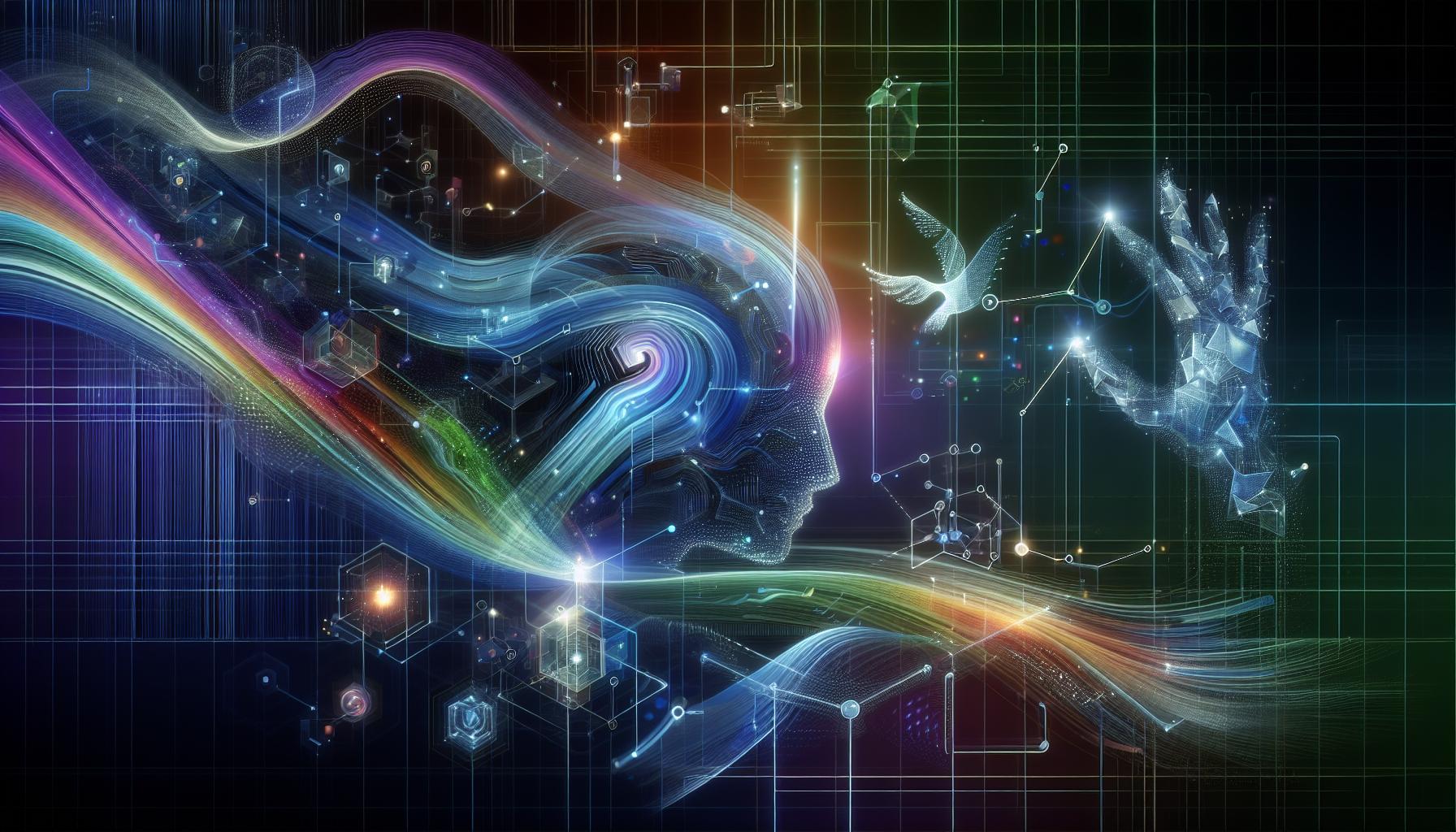
Unlocking the potential of large-scale neural networks often involves navigating complex mathematical frameworks. Among these, Low-Rank Adaptation (LoRA) presents a profound strategy that significantly elevates the efficiency of fine-tuning models. By decomposing weight updates into a product of low-rank matrices, LoRA significantly reduces the number of trainable parameters, making it possible to adapt monumental models without overwhelming computational resources.
Understanding the Decomposition
At the core of LoRA’s mechanics lies its ingenious approach to handling weight adjustments. Instead of directly modifying the weight matrix ( W ) during training, LoRA introduces two smaller matrices, ( A ) and ( B ), that interact to approximate the weight update ( Delta W ) as follows:
- Matrix ( A ): Represents a compressed representation that captures essential features for the task.
- Matrix ( B ): Complements ( A ) by facilitating the transformation back into the higher-dimensional space.
This decomposition not only conserves memory but also promotes faster training cycles, making it especially attractive for developers leveraging complex models in AI image generation tasks.
Benefits to AI Image Generation
The implications of adopting LoRA in the realm of AI image generation are significant. By fine-tuning large pre-trained models efficiently, creators can achieve high-quality outputs that reflect specific styles or elements without the extensive resource commitment traditionally required. Particularly, it allows for:
- Reduced Overfitting: Smaller models trained through LoRA risk fewer generalization issues, leading to images that better represent the desired outputs.
- Faster Training Times: The computation savings realized through low-rank adaptation mean that models can be trained rapidly, enabling quicker iterations in creative workflows.
- Increased Flexibility: Developers can easily adapt existing models for various applications, enhancing the versatility of their image generation solutions.
For instance, a creator aiming to produce artwork in the style of a specific artist can fine-tune a large image generation model using LoRA, allowing the nuances of that style to emerge with clarity and precision while using considerably less computational power than traditional methods.
Practical Steps for Implementation
To leverage LoRA effectively in your projects, consider the following actionable steps:
- Choose the Right Framework: Start with a selected high-level framework, like PyTorch, that integrates LoRA seamlessly.
- Utilize Pre-trained Models: Select models that have already been trained on large datasets to provide a strong foundation for adaptation.
- Monitor for Optimal Parameters: During the fine-tuning process, carefully adjust the ranks of matrices ( A ) and ( B ) to find the optimal balance between model performance and computational efficiency.
By mastering these technical mechanics outlined here, creators can harness the transformative power of LoRA in AI image generation, thereby enhancing not only their artistic capabilities but also improving their workflow efficiency and resource management.
Key Benefits of Using LoRA for Creators

In the fast-evolving landscape of AI image generation, creators are constantly seeking tools that enhance their workflow and output quality. One such groundbreaking technology is LoRA, which stands for Low-Rank Adaptation. This innovation allows artists and developers to fine-tune large pre-trained models in a cost-effective and resource-efficient manner. The ability to modify existing AI tools enhances creative potential without the need for exhaustive retraining from scratch, which can be time-consuming and require substantial computing power.
The key advantages of leveraging LoRA in AI image generation are multifaceted. First and foremost, it significantly reduces the computational burden on creators. By allowing modifications to a small set of parameters rather than the entire model, LoRA facilitates quicker adaptations while maintaining high-quality output. This means more time for creativity and less time managing technical hurdles. Here are some specific benefits of using LoRA for creators:
- Efficiency in Training: LoRA enables faster training cycles, allowing creators to experiment with different styles, themes, or subjects without long wait times.
- Cost-Effective: By minimizing the need for extensive computational resources compared to traditional retraining, LoRA lowers the barrier for individual artists or small studios looking to leverage cutting-edge technology.
- Versatility: It enhances model flexibility, allowing creators to switch between tasks and styles seamlessly, promoting creative experimentation and expansion into new areas.
- Improved Performance: With LoRA, the quality of generated images can often surpass those produced by fully fine-tuned models, thanks to its focus on the most relevant parameters for the task at hand.
Furthermore, the integration of LoRA in AI image generation paves the way for tailored outputs. For instance, an illustrator could modify a model trained on landscapes to generate unique fantasy environments with minimal adjustments. This precision not only saves time but also ensures that the final images closely align with the creator’s vision. In summary, adopting LoRA technology transforms the way creators interact with AI in their workflows, making it a vital tool for anyone serious about pushing the boundaries of digital art.
Integrating LoRA into Your AI Image Generation Workflow
Integrating low-rank adaptation (LoRA) models into your AI image generation workflow can revolutionize the way you create art, enabling you to produce stunning visuals with greater efficiency and precision. By harnessing this innovative technology, you can tap into refined stylistic elements, making your creations stand out in a crowded digital space. The adaptability provided by LoRA models allows users to fine-tune various aspects of the generative process, leading to higher quality outcomes while maintaining control over stylistic nuances.
### Getting Started with LoRA Models
To effectively integrate LoRA into your workflow, begin by selecting a suitable LoRA model that aligns with your artistic goals. Numerous pre-trained models, such as those inspired by popular media like the Netflix show *Arcane*, are available for use. When setting up your environment, consider the following steps:
- Choose Your Model: Browse repositories that feature a variety of LoRA models. For instance, consider models specifically designed for vibrant character designs or specific art styles.
- Install Necessary Tools: Ensure you have the required software installed, such as Stable Diffusion and any specific plugins that support LoRA implementation.
- Adapt Prompts: Craft prompts that cater to the specific LoRA model’s strengths. For example, using prompts that mirror the characteristics of the chosen model can enhance the output quality.
### Optimizing Your Workflow
Once you have your model ready, it’s essential to focus on the optimization of your workflow. Start experimenting with various parameters and settings within your AI image generation tool. Consider the following techniques for fine-tuning your results:
- Adjust Detail Sliders: Use detail sliders available in tools that support LoRA to enhance image quality. These adjustments can introduce cleaner lines and richer textures.
- Iterate and Refine: Generate multiple iterations of your artwork, adjusting prompts based on previous outputs to gradually hone in on your desired aesthetic.
- Combine Models: Experiment with layering different LoRA models to create unique blends of styles, offering a broader spectrum of visuals while leveraging the strengths of each model.
### Real-World Example
For instance, if you’re looking to create a piece echoing the *Arcane* style, start with a prompt that captures key characteristics such as vibrant colors and dynamic expressions. By utilizing an Arcane-style LoRA, you generate an image where the unique elements of the series are more pronounced. This approach could yield artwork that not only resonates with fans of the series but also showcases your creativity through personalized adaptations.
Incorporating LoRA into your AI image generation not only simplifies the process but also enhances the creative potential of artists at any skill level. With this technology at your fingertips, explore bold styles and intricate details like never before and push the boundaries of your artistic expression.
Common Use Cases and Success Stories with LoRA
LoRA technology has emerged as a transformative force across various industries, particularly in the realm of smart buildings and environmental monitoring. With its remarkable ability to facilitate low-power, long-range communication, LoRA has become a preferred choice for IoT applications, offering endless possibilities for innovation that significantly enhances operational efficiency.
For example, in smart buildings, LoRA is utilized for centralized facility management, providing real-time data on occupancy, energy consumption, and security systems. This technology enables building managers to optimize resource allocation and reduce operational costs. The LoRa Alliance reports that the adoption of LoRA technology in smart buildings has resulted in improved energy efficiency and enhanced user experiences, underlining its importance for modern infrastructure. Through seamless integration of sensors and gateways, buildings can be transformed into intelligent environments that respond dynamically to the needs of their occupants.
Similarly, in environmental monitoring, LoRA’s application has made breakthroughs in remote climate data collection. Projects like the Milesight weather balloon initiative illustrate how LoRA facilitates the transmission of crucial atmospheric measurements from high altitudes. Equipped with LoRaWAN gateways, these balloons can communicate effectively over long distances, providing meteorologists with valuable insights into climate patterns without the high costs typically associated with such data collection methods. The implementation of such projects exemplifies how LoRA effectively bridges communication gaps in challenging environments.
As organizations continue to explore the capabilities of LoRA, its role in enhancing smart city initiatives becomes ever more pronounced. Cities integrating LoRA technology can deploy comprehensive sensor networks that monitor everything from air quality to traffic conditions. This not only enables informed decision-making but also fosters environmental sustainability. Overall, the success stories emerging from the deployment of LoRA reflect its potential to revolutionize industries by driving efficiency, enhancing communication, and promoting sustainability.
By harnessing the power of LoRA, creators and innovators in the field of AI image generation can benefit from greater data accessibility, allowing for more dynamic inputs that can enrich the image generation process. As the landscape of technology continues to evolve, understanding and leveraging LoRA becomes crucial for those looking to stay ahead in a rapidly changing environment.
Best Practices for Implementing LoRA in Your Projects
Implementing Low-Rank Adaptation (LoRA) can significantly enhance your AI image generation projects by enabling efficient fine-tuning of large models without overwhelming computational resources. One of the best practices is to ensure that you actively engage with the model’s architecture; freeze the original weights to prevent them from being altered during training. Instead, introduce low-rank matrices to adjust the model parameters dynamically. This approach conserves memory and accelerates the training process by only updating the minimal set of necessary weights, a strategy particularly useful for creators working with limited hardware capabilities.
Strategies for Effective LoRA Implementation
To maximize the benefits of LoRA in your AI image generation endeavors, consider the following strategies:
- Choose the Right Model: Start with a pre-trained model that aligns well with your specific domain. The efficiency of LoRA is enhanced when applied to robust, high-performance models known for their foundational capabilities.
- Parameter Selection: Carefully select the low-rank matrices. Experiment with various configurations to determine the optimal rank sizes that achieve a balance between performance and computational efficiency. A smaller rank size may lead to faster computation but could sacrifice some quality.
- Monitor Training Progress: Use loss metrics and validation set performance to actively monitor how changes affect the model during fine-tuning. This will enable you to make timely adjustments and iteratively refine your approach.
Testing and Validation
Once you have implemented LoRA, rigorous testing is crucial. Create a comprehensive validation strategy that assesses generated images for both quality and diversity. For instance, you could utilize:
| Testing Method | Description |
|---|---|
| Quantitative Metrics | Utilize metrics such as FID (Fréchet Inception Distance) to evaluate the similarity of generated images to the training dataset. |
| Qualitative Analysis | Conduct user studies or qualitative assessments to gather feedback on the generated outputs from human evaluators, ensuring they meet artistic standards. |
Incorporating these best practices when implementing LoRA in your projects will not only streamline your workflow but also enhance the creative potential of your AI image generation. By focusing on efficient tuning strategies and maintaining a robust validation process, you can unleash the full power of LoRA, aligning perfectly with your goals outlined in “What Is LoRA in AI Image Generation? Technical Breakdown for Creators.”
Troubleshooting and Optimizing Your LoRA Applications
When utilizing LoRA (Low-Rank Adaptation) in AI image generation, practitioners often encounter challenges that can hinder the intended output. Success in implementing LoRAs hinges not only on understanding their capabilities but also on mastering troubleshooting techniques and optimization strategies. Ensuring the best results involves refining your approach to the underlying architecture and the specific LoRAs in use.
Identifying Common Issues
To troubleshoot effectively, it is crucial to recognize the common pitfalls associated with LoRA applications. These may include:
- Overfitting: Excessive training on a narrow dataset can diminish the versatility of generated images. To counter this, ensure your dataset is diverse and representative.
- Underfitting: Conversely, insufficient training may result in a lack of detail or richness in outputs, indicating the model hasn’t learned effectively from the training data.
- Compatibility Problems: Not all LoRAs work seamlessly with every model. Validate the compatibility of your chosen LoRA with the underlying framework (e.g., Stable Diffusion) to avoid operational failures.
Optimization Strategies
Once common issues are addressed, focus shifts to optimizing your LoRA applications. Here are several actionable steps that can elevate the quality of your generated images:
- Experiment with Hyperparameters: Adjust the learning rate, batch size, and number of training epochs. A well-tuned learning rate can significantly improve convergence times and output fidelity.
- Layer Freezing: Consider freezing specific layers of your neural network to retain learned features while allowing others to adapt. This technique can help in tailoring the output style of generated content.
- Data Augmentation: Enhance the training dataset with various transformations (e.g., rotation, scaling, color shifts) to enrich the model’s understanding and generate more varied outputs.
Incorporating these strategies not only resolves common issues but also enriches the quality of results derived from your LoRA applications, thereby aligning with the objective of maximizing the creative potential offered by AI image generation technologies. Adopting a systematic approach in troubleshooting and optimization can profoundly impact your overall experience and output quality when using LoRAs.
Future Trends: What Lies Ahead for LoRA in AI Image Generation
The evolution of LoRA (Low-Rank Adaptation) models marks a transformative period in AI image generation, bringing to light the potential for more nuanced and tailored outputs. As creators increasingly leverage these technologies, future trends indicate significant advancements that could redefine how artistic styles are replicated and generated. With ongoing research and development, it is essential to stay informed about how these trends may influence both the technology itself and the broader creative landscape.
Enhanced Customization and User Interface
One of the most anticipated trends is the further enhancement of user-friendly interfaces that facilitate more personalized image generation experiences. As platforms like Flux Lora and Stable Diffusion evolve, they are likely to incorporate advanced features allowing users to modify various parameters, such as style intensity and subjects’ characteristics, with greater ease. This level of customization could empower not just seasoned artists but also amateurs to create professional-quality images tailored to their specific visions.
Integration of Diverse Art Styles
In the coming years, we can expect LoRA models to integrate an even broader array of artistic styles, including regional and cultural art forms that have historically been less represented in digital workflows. As AI continues to learn from diverse datasets, the potential to generate images that respect cultural nuances while drawing from traditional aesthetics could provide artists with a unique palette for creativity. For example, utilizing a LoRA model trained on indigenous art styles could enable artists to create pieces that are respectful and informed by the cultural context.
Collaboration Between AI and Human Creators
The fusion of AI capabilities with human creativity is set to deepen, leading to an era of co-creation where artists utilize LoRA models not just as tools but as collaborative partners. This partnership may give rise to new artistic movements, blurring the lines between human and machine-generated art. Artists will likely experiment with these technologies, refining their own styles and discovering innovative ways to blend traditional techniques with AI-generated enhancements.
Advanced Ethical Guidelines and Best Practices
As the adoption of LoRA in AI image generation grows, the need for robust ethical frameworks will become increasingly critical. Issues surrounding copyright, cultural appropriation, and the authenticity of generated art will demand attention. Creating established best practices will help safeguard artists and their work while encouraging responsible utilization of AI technologies. Engaging in discussions about ethics and usage rights will be paramount for developers and artists alike.
In conclusion, the future of LoRA in AI image generation holds promising possibilities that can revolutionize the creative process. By enhancing customization options, integrating diverse art styles, promoting collaboration between human artists and AI, and establishing ethical guidelines, the trajectory this technology takes could significantly impact both the artistic community and the technological landscape in the coming years.
FAQ
What is LoRA in AI Image Generation?
LoRA, or Low-Rank Adaptation, is a technique in AI image generation that enhances model performance by adjusting weights efficiently. It allows for high-quality images while requiring less computational power.
This method works by integrating additional layers into existing models, thus enabling better style transfer and clearer images. It’s particularly useful for users looking to create art with specific styles or details using tools like Stable Diffusion and ComfyUI.
How does LoRA improve image quality in AI generation?
LoRA improves image quality by allowing creators to fine-tune existing models without retraining them from scratch. This results in higer fidelity and detail in generated images.
By using LoRA, artists can achieve distinct styles with minimal computational resources. For example, combining LoRA with a well-trained base model can yield stunning visuals tailored to specific artistic preferences.
Can I use LoRA with any AI image generation model?
Yes, you can use LoRA with various models like Stable Diffusion and ComfyUI. Its adaptability makes it a popular choice among creators.
By implementing LoRA, you can enhance many current models without extensive modifications. This versatility opens up creative possibilities, making it easier to generate diverse styles and concepts in your artwork.
Why does LoRA require less computational power?
LoRA requires less computational power because it focuses on adjusting a small subset of model parameters rather than training the entire model. This efficiency speeds up the image generation process.
With fewer parameters to update, LoRA minimizes resource consumption while still achieving impressive results. This makes it an attractive option for both amateur and professional creators seeking cost-effective solutions.
What are some practical applications of LoRA in creating AI art?
LoRA can be used for crafting stunning visuals across various styles, including fantasy, realism, and anime. This technique allows artists to generate unique artworks efficiently.
For instance, creators can generate illustrations for gaming or personal projects by fine-tuning existing models to capture specific aesthetic elements. The capabilities of LoRA empower artists to explore and innovate with their digital creations.
How do I get started with LoRA in AI image generation?
To get started with LoRA, you can choose a compatible AI model and follow available guides to implement LoRA adjustments. Many resources are available for new users.
For detailed instructions, consider visiting online communities that focus on AI art generation, where you can find tutorials and examples to help you begin your creative journey.
Can LoRA be used for style transfer in AI art?
Yes, LoRA is particularly effective for style transfer, allowing you to integrate characteristics from one style into another seamlessly. It enhances the creative possibilities for artists.
This technique enables creators to produce artwork that combines elements from diverse sources, making it valuable in artistic innovation and experimentation. Consider exploring LoRA’s capabilities to discover new artistic expressions!
The Way Forward
In summary, LoRA (Low-Rank Adaptation) serves as a vital tool in AI image generation, especially within frameworks like Stable Diffusion. By incorporating low-rank matrices into pre-existing machine learning models, LoRA allows for specific adaptations without the need for extensive retraining. This capability enables creators to enhance their artistic outputs with tailored styles, characters, and concepts, making their work both unique and vibrant.
As you delve deeper into the fascinating world of AI-driven image generation, consider experimenting with LoRA models to unlock new creative potentials in your projects. There’s a wealth of resources available, from installation guides to community-driven models, to support your journey. Embrace the opportunity to learn, explore, and innovate—your next masterpiece may just be a LoRA away!

